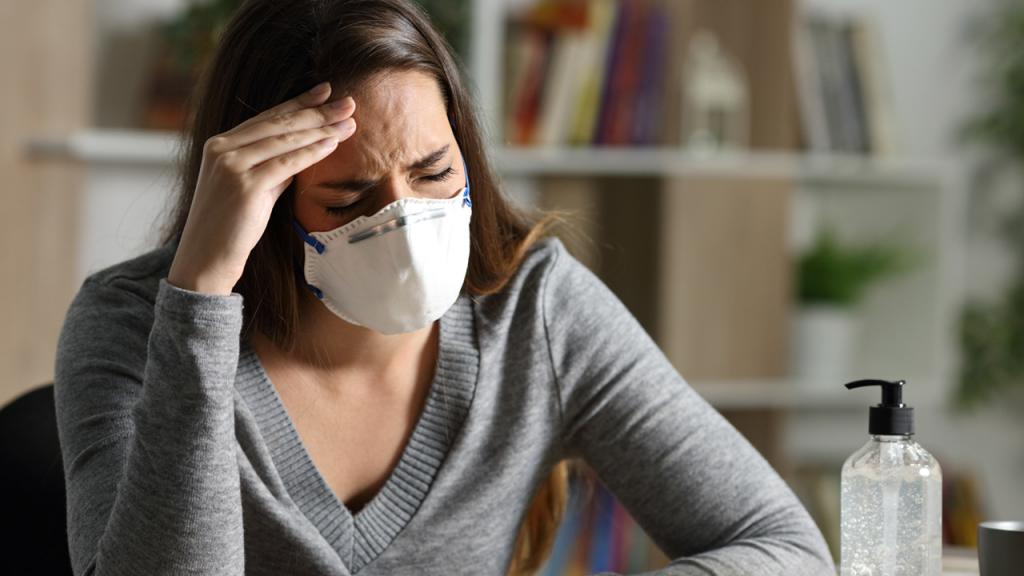Although atopic dermatitis has always been considered an insignificant superficial skin disease, we cannot ignore its chronic and recurrent nature. Doctors Carla Castro and Vania Diez Pérez, specialists in this skin condition, explain how we can deal with it.
Atopic dermatitis (AD) is a inflammatory skin disease characterized by intense itching and eczema, with a chronic evolution and in the form of outbreaks, but there is still much ignorance about this pathology that is estimated to affect some 230 million people in the world. Although it is more common in babies and children, it can also occur in adults.
The Dr. Carla Castro, Argentine dermatologist and specialist in atopic dermatitis, He maintains that when talking about AD we are referring to a disease that is much more complex than it seems.
“For many years it has been confused with different types of allergies, but today we know that AD is a chronic disease that affects the skin with a systemic impact and very particular characteristics such as the presence of dry, sensitive skin, with a tendency to presence of eczemas that come and go, which are repetitive, in addition to itching, which often makes life impossible for a patient”, he says.
The specialist highlights the importance of consulting every time the patient detects that he has lesions on the skin that return, that bother, that itch, that make daily life difficult, and that appear permanently or intermittently. “AD physicians, skin specialists, we have the potential to provide patients with a proper diagnosis and especially effective and safe treatment,” she adds.
beyond the skin
atopic dermatitis not only affects the skin, it can also compromise life in other aspects and it can develop together with other inflammatory diseases in various organs, such as asthma or rhinitis, and it can also be accompanied by what are known as non-atopic comorbidities.
The Dr. Vania Diez Pérez, dermatologist specializing in atopic dermatitis and head of the dermatology service at the Central Hospital of the Social Welfare Institute (IPS), maintains that a combination of genetic and environmental factors are related to atopic dermatitis. “In addition, it is estimated that up to 40% of patients with atopic dermatitis have a family history of the disease,” says the specialist.
Read more: Atopic dermatitis: cases can go from mild to recalcitrant pictures
“Especially attention should be paid to mood disorders such as depression or anxiety, depression symptoms accompanied by difficulty in carrying out daily tasks, at work, in the study in the case of children and above all, a lot of affectation of rest and sleep. That is why it is important to control the disease in each of its stages”, says Dr. Castro.
AD treatment today
Dr. Castro insists that until recently there were really few treatment options for this disease. The most important are the daily skin care, the use of appropriate cleansing products and emollients or moisturizing creams every day. In this way, the skin’s ability to isolate itself from environmental factors that can irritate it, such as allergens and sudden changes in temperature, is reconstructed.
Today, the development of medicine has provided the treatment of atopic dermatitis with new resources, such as small molecules: new drugs that can act on the specific causes of the disease, controlling the inflammatory alteration of the skin. In this sense, recentlyAn oral treatment (JAK inhibitor) has been approved in our country for patients older than 12 years with moderate to severe atopic dermatitis, which with a daily dose significantly reduces itching and skin lesions in patients.
The specialist explains that we are facing a new paradigm in the treatment of atopic dermatitis, which is the long-term control of the signs of the disease and the lesions that appear on the skin.
“What we call eczema and especially the control of pruritus, which is this very annoying symptom that patients have. We have seen that long-term control of the disease not only changes the course of the disease but completely changes the lives of patients,” he said.
For her part, the Dr. Ten Perez, maintains that current treatments include topical, systemic and phototherapy therapies, combined with techniques to hydrate and sanitize the skin. “Even so, some patients are unable to control the disease with the available management strategies, so the symptoms and signs persist,” says Dr. Diez Pérez.
Finally, Dr. Castro insisted that long-term control of the disease, whether in terms of its mild symptoms or its severe symptoms, creates a new perspective for all patients. “These treatments are a hope that we have within reach. If I have to recommend something, it would be to consult with specialist doctors who have the capacity to provide patients with these new therapeutic tools that will generate a real change in their lives”, she concludes.


















